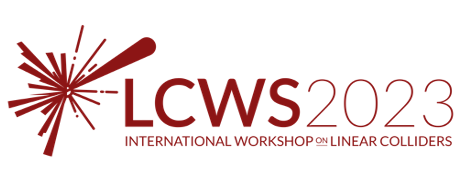Speaker
Description
which interacts gravitationally with ordinary matter. If this dark sector contains a U(1) symmetry,
and a corresponding 'dark' photon ($A_{D}$) , it is natural to expect that this particle with kineticly mix
with the ordinary photon, and hence become a 'portal' through which the dark sector can be studied.
The strength of the mixing is given by a mixing parameter $(\epsilon)$. This
same parameter governs both the production and the decay of the $A_{D}$ back to SM
particles, and for values of $\epsilon$ not already excluded, the signal would be
a quite small, and quite narrow resonance: If $(\epsilon)$ is large enough to
yield a detectable signal, its decay width will be smaller than the detector resolution, but so large
that the decay back to SM particles is prompt. For masses of the dark photon above the reach of
BelleII, future high energy e+e- colliders are ideal for searches for such a signal, due to the
low and well-known backgrounds, and the excellent momentum resolution and equally
excellent track-finding efficiency of the detectors at such colliders.
This contribution will discuss a study investigating the dependency of the limit on the mixing
parameter and the mass of the $A_{D}$ using the $A_{D}\rightarrow\mu^{+}\mu^{-}$ decay mode in
the presence of standard model background, using fully simulated signal and background events in
the ILD detector at the ILC Higgs factory. In addition, a more general discussion about the capabilities
expected for generic detectors at e+e- colliders operating at other energies will be given.



